Everything You Want to Know About Bass Fishing at Night (Expert Guide)
Share this bass fishing article with every angler you know!
In the fishing world, timing tends to be one of the biggest concerns of fishermen regardless of what they’re going for. There’s a reason for that. Whether it’s the area’s typical temperature, bug activity, or bait fish activity at a certain time, specific fish seem to bite more –or only- at a specific time of day.
However, that can lead to some bad fishing habits. For instance, you'll typically find catfish anglers huddled on the side of a muddy bank late at night while completely neglecting their daytime opportunities. You'll find bass anglers who only head out for a couple of very specific hours in the day because that's when they got a lot of bites several years ago.
The truth is that fish can typically be caught year-round and at any time in the day/night cycle. That's especially true with bass, you just have to adjust your strategy to match the temperature, time, and various other factors to make sure the attempt is a success.
Bass fishing at night can be extremely fruitful, and it can present a unique challenge to anglers who are accustomed to squeezing all their bass fishing experiences into a set time slot during perfect fishing days.
The experience is a bit different, though. So, we're going to go over everything you need to know to branch out of your usual fishing schedule and start lipping bass in the dead of night.
Let’s get started.
Newsletter Signup
Can You Fish for Bass at Night?
A big misconception is that it's too cold at night for bass to be active and that you won't get any bites. That's entirely false. Weather does play a big part in bass activity, and the temperature does tend to drop at night, but remember one thing, the BassMaster Classic takes place in early spring when the daytime water temperatures are colder than summer nighttime water temperatures
The key to fishing at night is to check the fishing forecast, take the temperature dip, and several other factors into consideration before planning your trip and hitting the water, plus, you need to be able to adapt a few of your own techniques and behaviors.
Nighttime Bass Fishing: Environmental and Behavioral Points
Fishing for bass at night is just as fun and exhilarating as it is during the day. Well, besides the fact that you’ll probably need some coffee to stay up. However, the environment and the behavior of the bass are, quite literally, a night and day difference. In a lot of ways, it’s a whole new world of bass fishing.
So, let’s go over how bass behavior changes, and what you need to focus on with the environment.
When to Fish at Night for Bass:
As usual, bass is more active during warm, summer nights. If you look back to the winter fishing example we gave above, even that is usually done on the best day possible and when the water has a slight chance to warm up. With night fishing, you definitely only want to go out during the peak summer months when the water temperature doesn't drop too much.
Anytime the water temperature is above 60 degrees is a good time to night fish. When the water temperatures rise above 80, it is even a better time to night fish for bass. And, you too will be more comfortable beating the summer heat.
How Bass Bite at Night:
As long as the temperature and other weather factors such as precipitation and barometric pressure line up with your standard daytime fishing trip, bass can be pretty aggressive at night. Think of all the large mosquitoes and dragonflies that buzz along the water’s surface once the sun goes down. That’s all food for bait fish and where there are bait fish, the bass will follow, and they’re more than happy to take advantage of it.
The difference with the bite is that it’s about ten times worse than fishing in a low-visibility, murky, cruddy pond.
If a bit of mud and debris can mask your lure as it zips right in front of a bass, the lack of sunlight penetrating the water and flashing off your lure certainly doesn’t help.
So, you can expect the bite to take a more reactive route. Noisy lures that chop up the water a lot, and even some of the high-tech lures with LED lights built-in can trigger those big reaction bites, as the bass doesn't need to get a clear line of sight on them to lock in and go for the kill.
Luckily, the reactive nature of nighttime bites means you’ll have a lot fewer questionable “bites”, and you will almost certainly be able to feel when the bass locks on.
Nighttime Bass Fishing: Strategic and Angler Behavior Changes
As far as bass behavior goes, there isn’t much of a difference as long as the weather and water temperature line up with normal daytime fishing. Instead, the biggest differences have to do with your own abilities and equipment.
While bass can feel vibrations in the water and pick up on even the smallest hint of movement, you’re not quite capable of adapting without using things that can drive the fish away.
So, the bulk of this article is going to focus on what you need to do, not what the bass are doing.
Change Your Gear:
As we mentioned earlier, nighttime fishing is a lot like fishing in a low-visibility pond but much worse. There isn't much light to cause your lures to flash underwater, and darker soft plastics are likely to just blend in with everything around them. Also, the lack of light will make it considerably harder for you to spot what you're doing, too.
Because of this, you’re going to want to focus on making your presentation more intrusive, and essentially, annoying to the fish. Also, making some subtle gear changes to make your life easier will help, too.
You have some great traditional options for this, and modern technology has opened a few doors, too.
Lures:
Your lure selection is going to be a bit more limited at night. If you’re used to tossing brown Pit Boss plastics, or you really enjoy darker jigs, this might be a big adjustment.
Color changes are going to be the biggest difference. If there is moonlight available to shine off your lures, fluorescent whites and yellows will reflect the moonlight and be easier for the bass to see.
It’s a good idea to switch out your usual favorites for options such as watermelon with red flakes, silver-flake lures, bright “Hazard” orange options, and similar lures that will catch what little light breaks the surface.
The darker the moon, the more you want to use darker colors mixed with lighter, such as black & white or black & red.
Beyond that, traditional high-action lures like RattleTraps, large-bladed spinners, and chatter baits are good options.
Get the best bass fishing lures and don’t forget to take advantage of newer options. New LED-equipped swimbaits can nab a fish’s attention and almost negate the low-visibility problem.
Line:
This one has nothing to do with the fish. Typically, Hi-Vis lines are discouraged since they affect the presentation of your lure, but in the middle of the night, it can be difficult to spot where you're actually fishing with a low-visibility line. With a Hi-Vis option, you can track your line back to the lure and keep it from getting snagged, fishing in completely different spots than you're meaning to, and watch the slack for bites more effectively.
Rod:
Again, this has nothing to do with the fish, and it’s not too necessary. However, it does help to switch your rod out for something brighter. If you sit your rod against a tree to handle more pressing business, drop it in the water, or otherwise lose track of it in the dark, having a brighter rod can save you a lot of time, and it can even keep you from having to buy a replacement.
You can also try clip-on LED lights to keep track of it in the dark.
Non-Standard Equipment:
There are two things besides your fishing gear that you’re going to want to pack for any night trip. These won’t affect your fishing, but they’ll make life a lot easier while you’re out there.
Flashlight:
Humans don’t adapt to low-light situations very well. A flashlight, or several mounted lights if you’re on a boat, is key. If you lose track of your rig, you can use the light to follow the line out of your rod to find it, and it’ll help with general navigation. Not to mention, if you gut hook a fish, you’ll appreciate the extra light while you’re trying to fish it out.
Bug Repellent:
One of the biggest problems inexperienced night fishermen have is that they forget to bring some really strong bug repellent. It’s nighttime in the middle of summer. Unless you want your trip cut short, or that once-in-a-lifetime bass getting off the hook, because you’re too busy slapping mosquitos, make sure to pack plenty of it.
Strategic and Behavioral Changes:
Due to your own limitations, there are some things you’ll have to change besides just gear and learning to gauge the water temperature a bit more accurately if you want to stand the best chance of pulling trophy-sized bass out in the middle of the night.
Learn to Feel the Bite:
Most day-only fishermen get into the habit of watching for pulls on their rod tips or the line moving in an odd direction, they don’t tend to really “feel” the bite until the fish is latched on and ready to brawl for whatever is on the hook.
At night, your eyes are pretty pathetic, and that’s not going to work. You might be able to make out your rod tip, but can you notice subtle movements in it? You certainly won’t see your line well enough to watch it gently sway off to the side when it should be coming in straight.
Instead, you need to learn to feel the shallower bites via the line. This is 100% easier on a spinning rod due to the position of the reel. Simply rest the index finger you use to release the line while casting right against the light without applying pressure. When a fish bites, even if it’s subtle, you’ll feel the line twitch or vibrate. This takes a bit of getting used to, but many experienced spinning rod users are probably familiar with it already. This is key for when the bite is subtle and you’d miss it if you were just looking at the rod tip.
Research First:
A big part of fishing for any species is locating underwater cover along with cutouts, drop-offs, coves, and various other spots. The problem with doing that at night is that you're not going to visibly see most of that beneath the surface, and if you're in a boat, reaching those spots might spell disaster as you try to navigate around hazards.
To get around that, you need to know the area well BEFORE you head out. Take the boat out, or hike along the bank, while there's plenty of daylight, and see what spots are likely to produce fish. Take note of any hazards you might need to know about, where the underwater structures are, possible snag hazards, and any other information you can gather that will help when visibility is low. If you know to look out for certain things, you'll avoid bashing your hull or spending the whole night re-tying rigs after snags.
Not to mention, you won’t have to worry about looking for prime fishing spots when you can barely see the terrain.
Expand Your Fishing Experience with Night Fishing
With how much topwater food is available, and how few anglers hit the water at night, bass fishing at night can be highly fruitful. You just need to hit it at the right time of the year and adjust your gear and strategy a bit.
For more bass fishing tips and our in-depth assistance app, check out Bass Forecast.
Our Bass Forecast app delivers the bass fishing intel: Hyper-local forecasts, structure scans, bait patterns for all bodies of water, all updated real-time for 2025 conditions. A field-tested fave by over a million anglers, this is your cheat code to hit honey holes untouched.
Download it now, plot your PB path, and watch averages soar to legends.
Tight lines, bass fanatics!

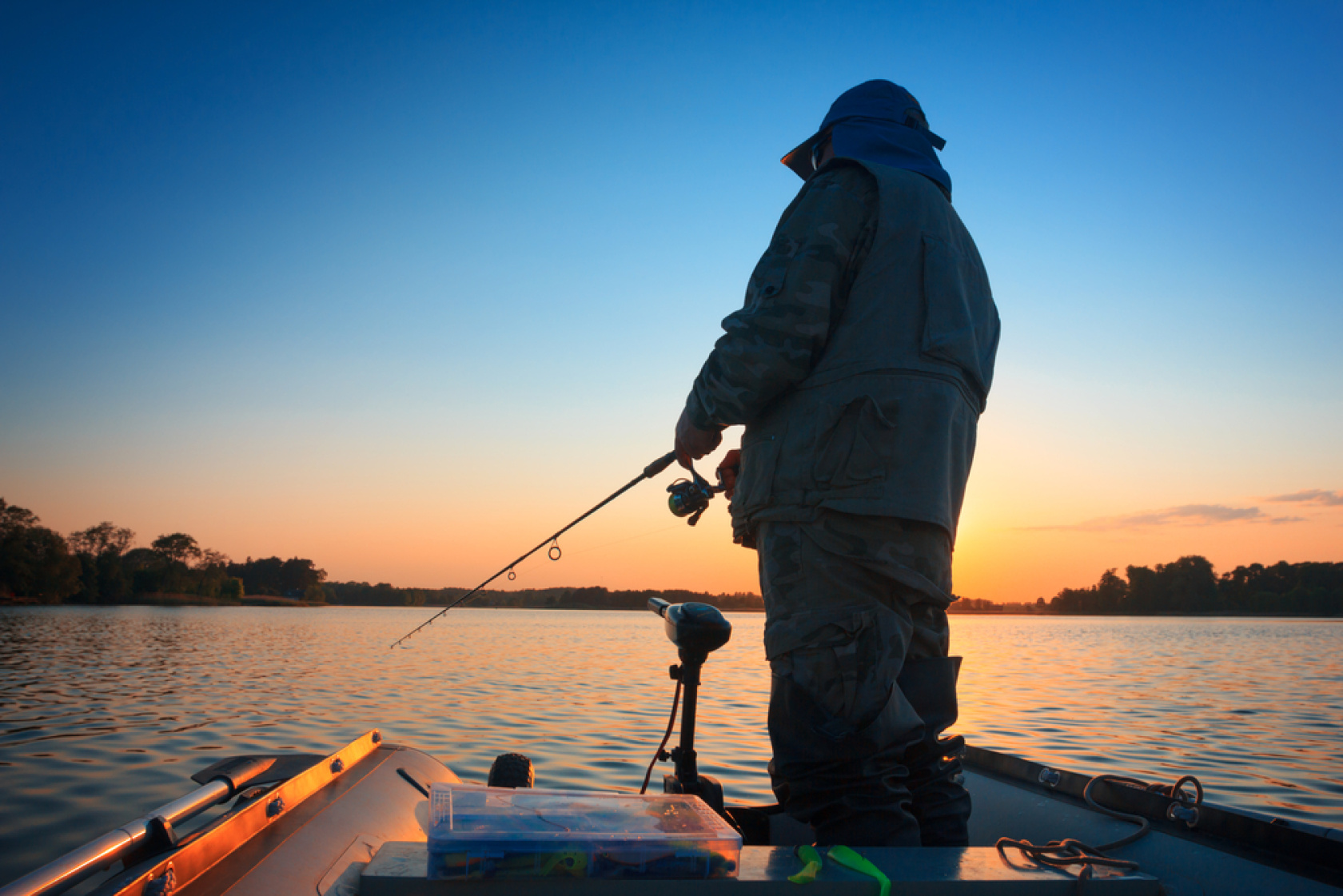


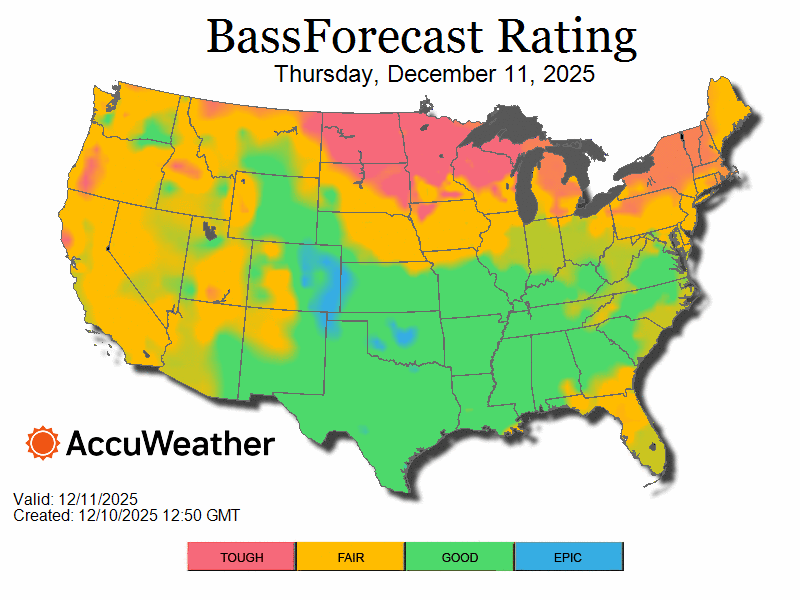

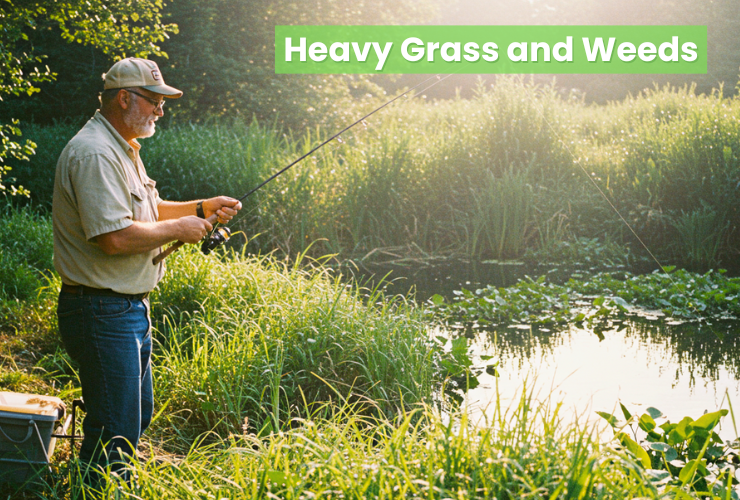

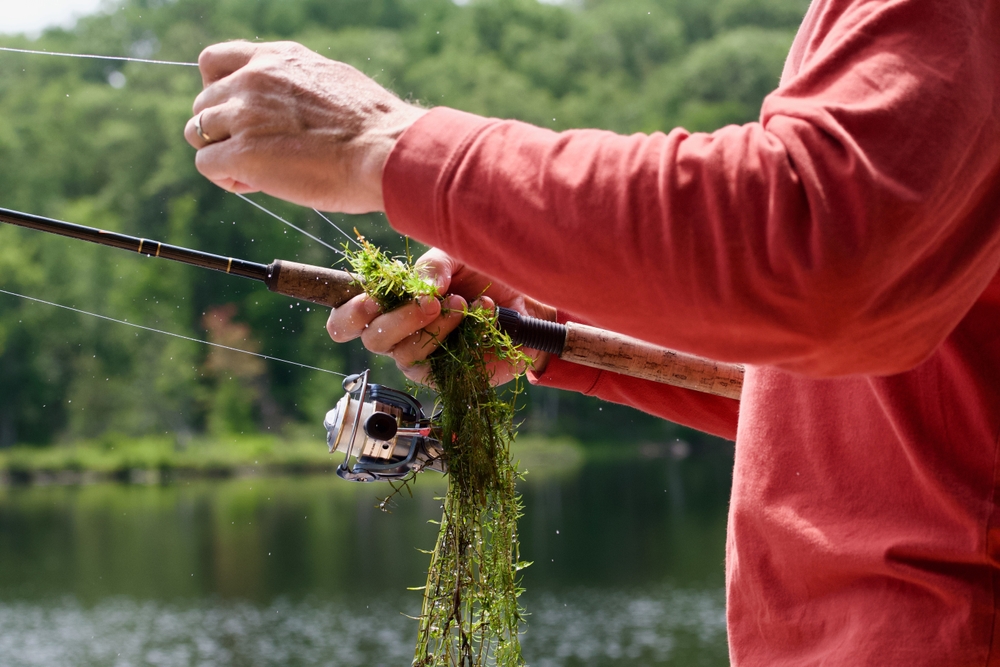
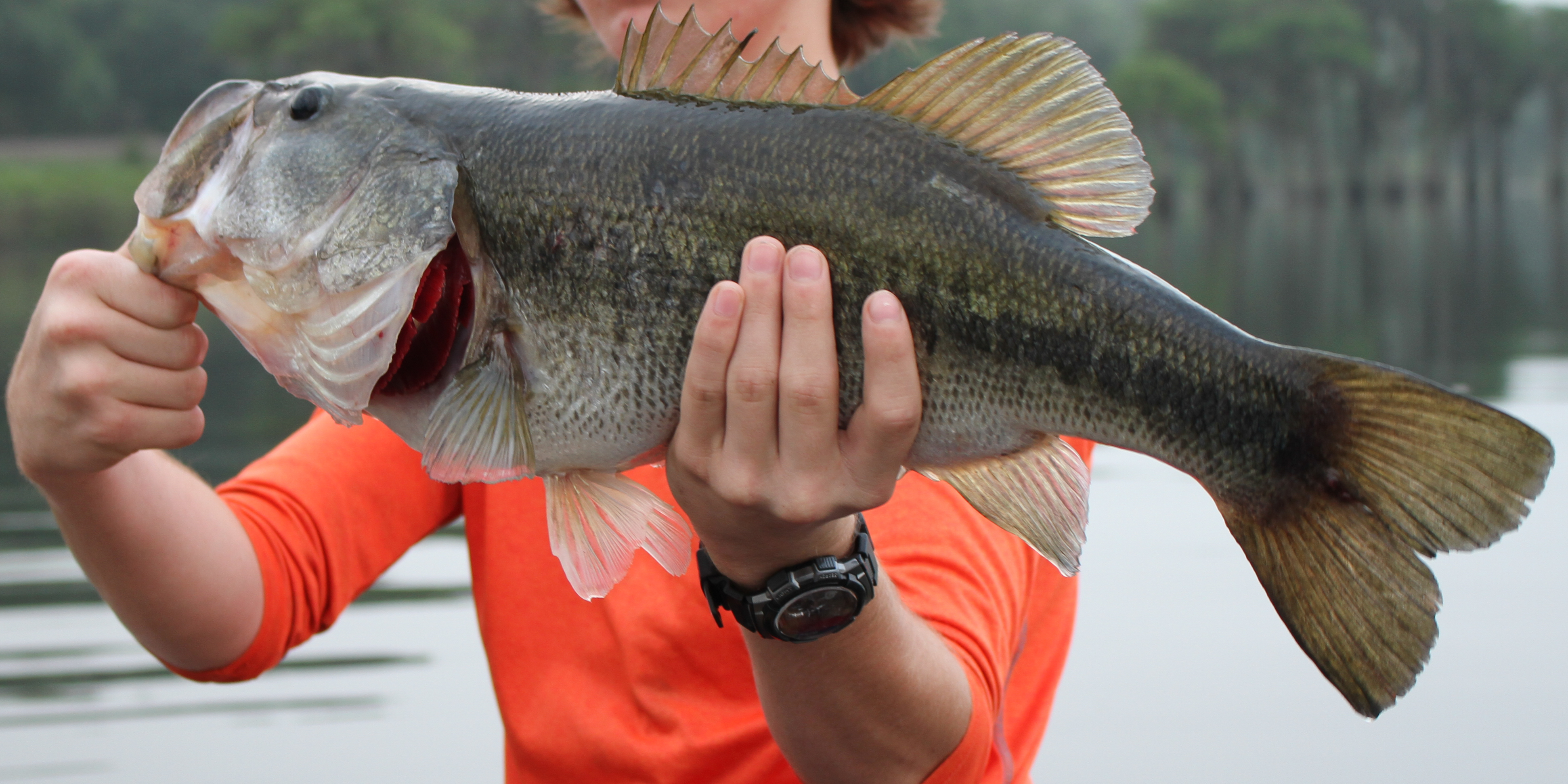
.png)
.png)